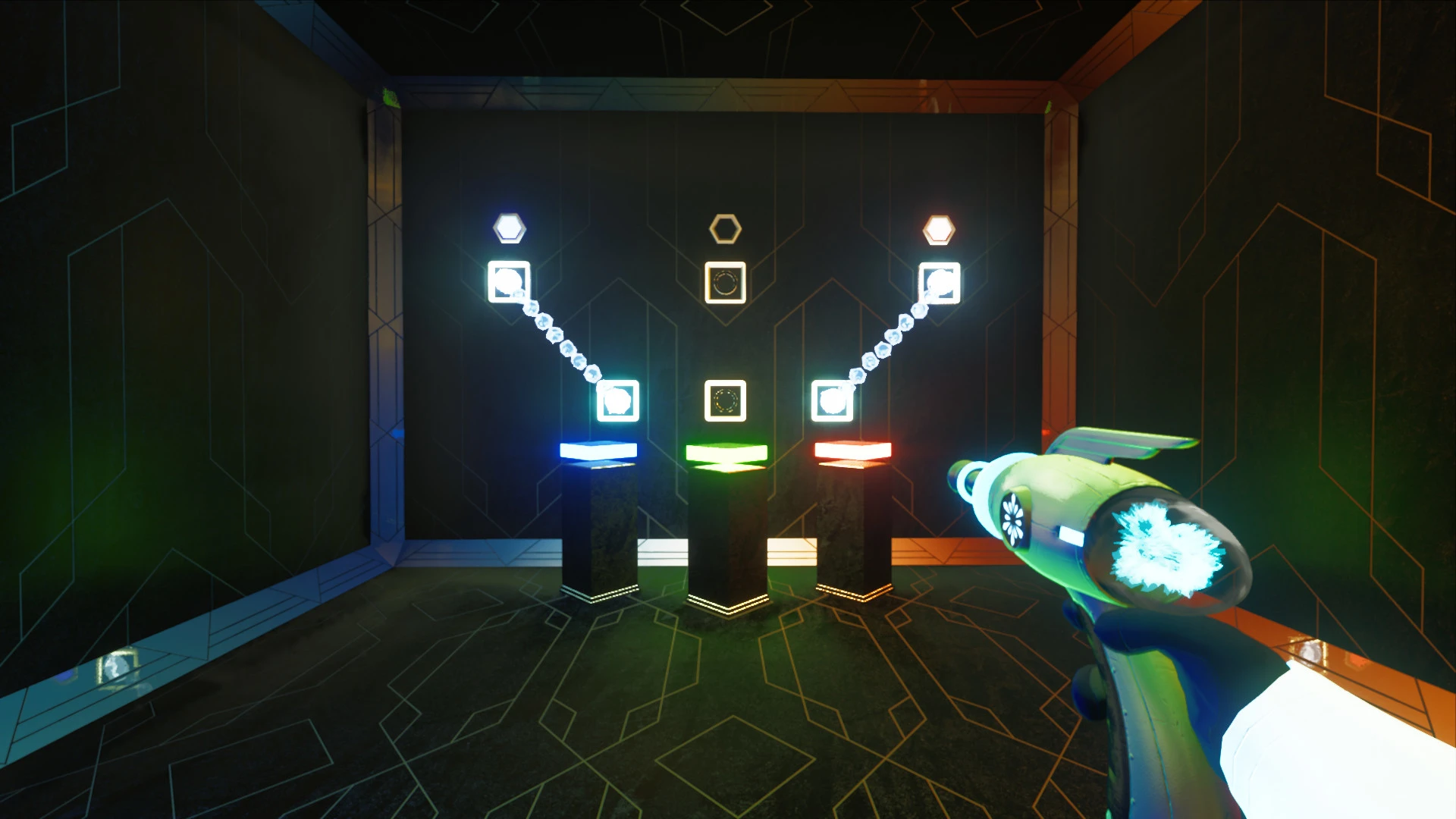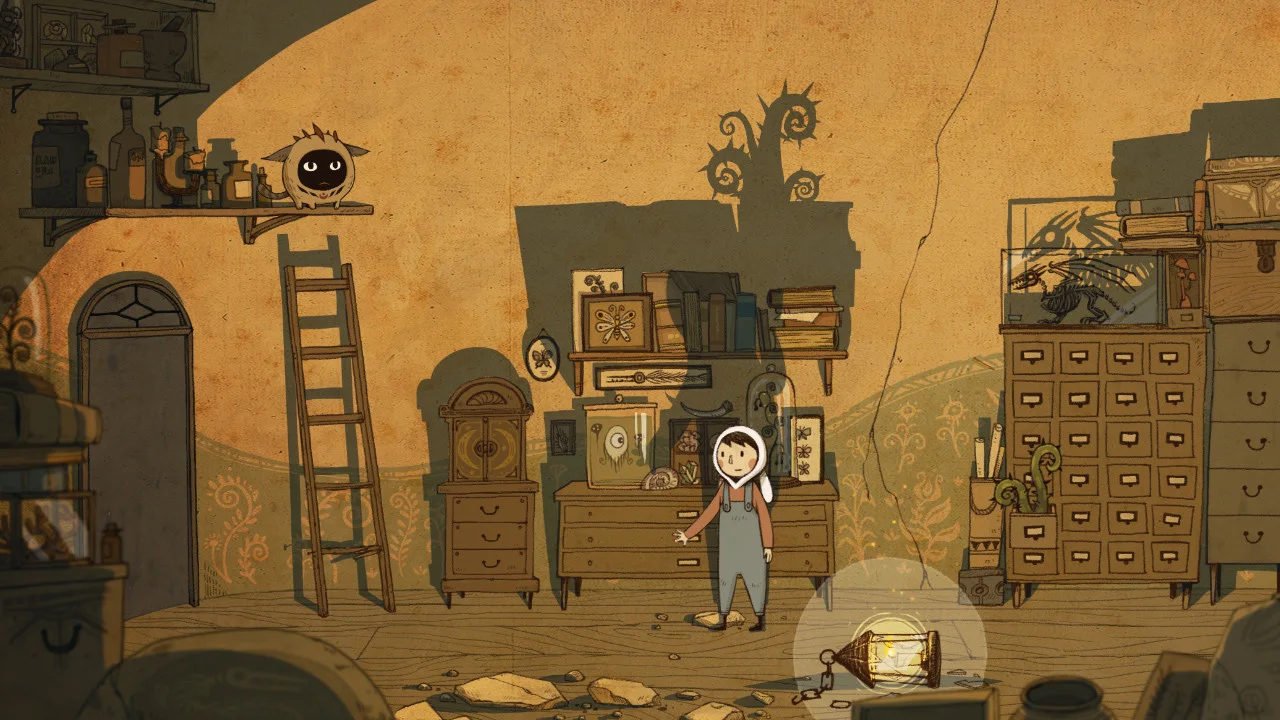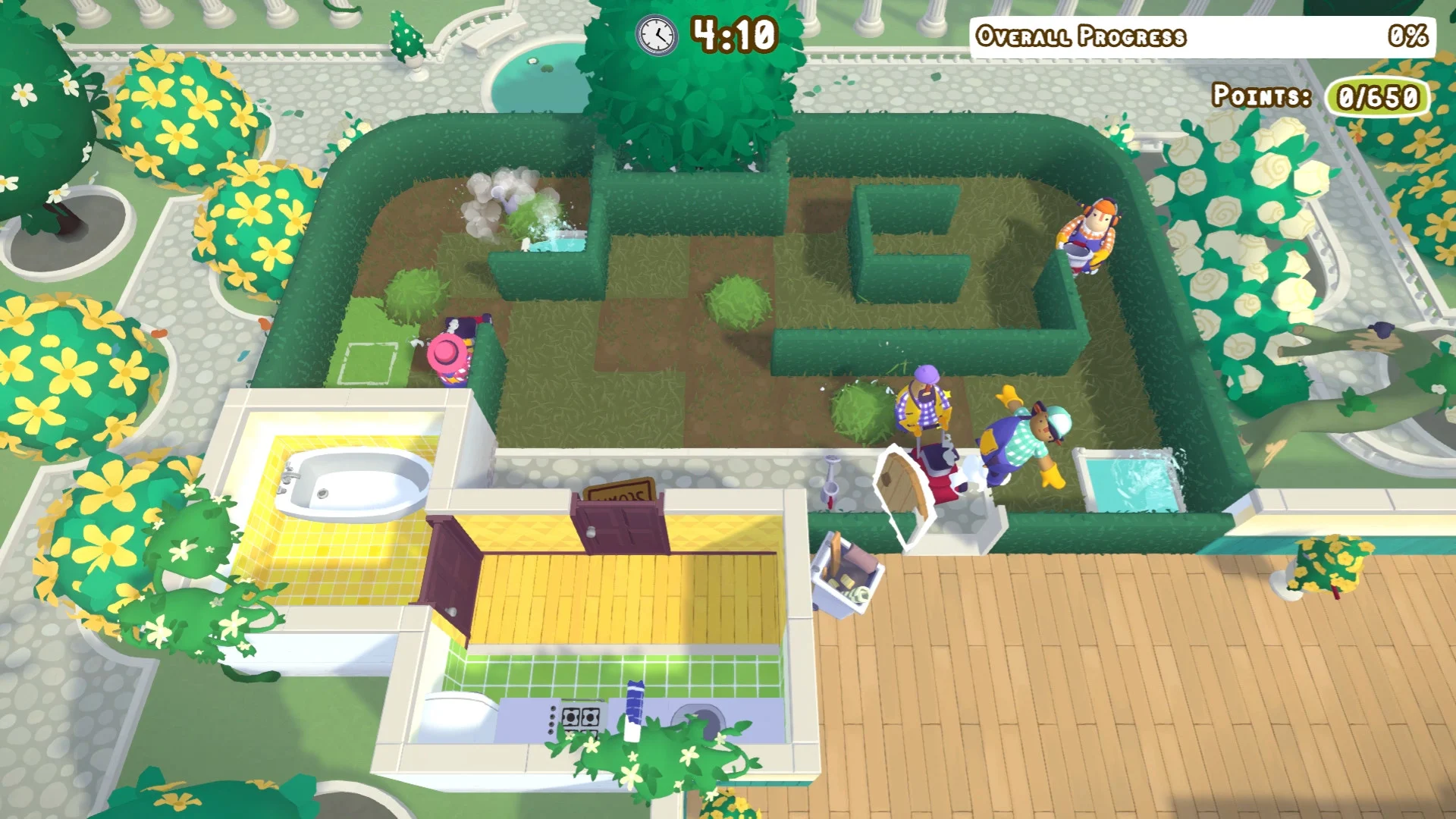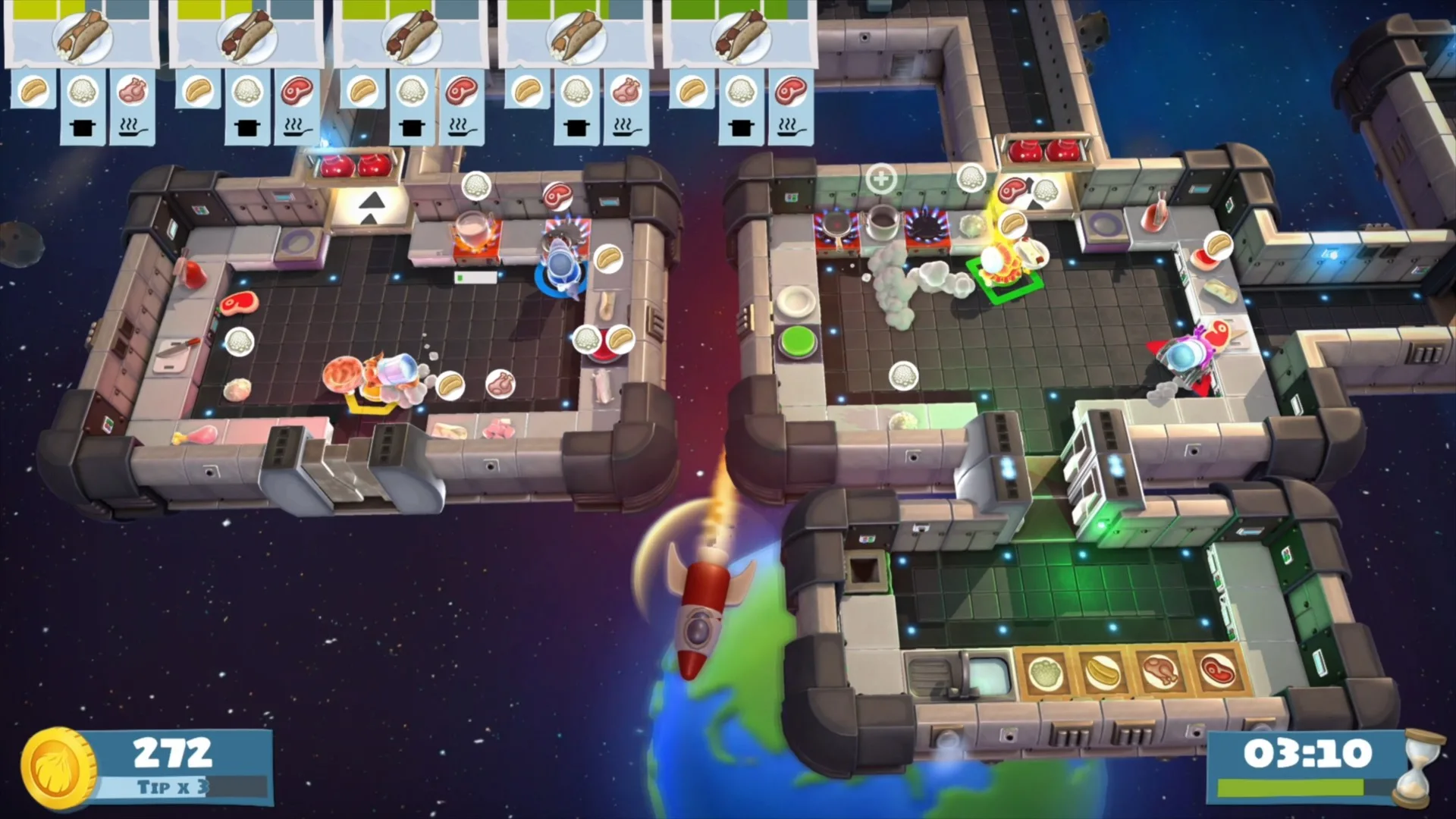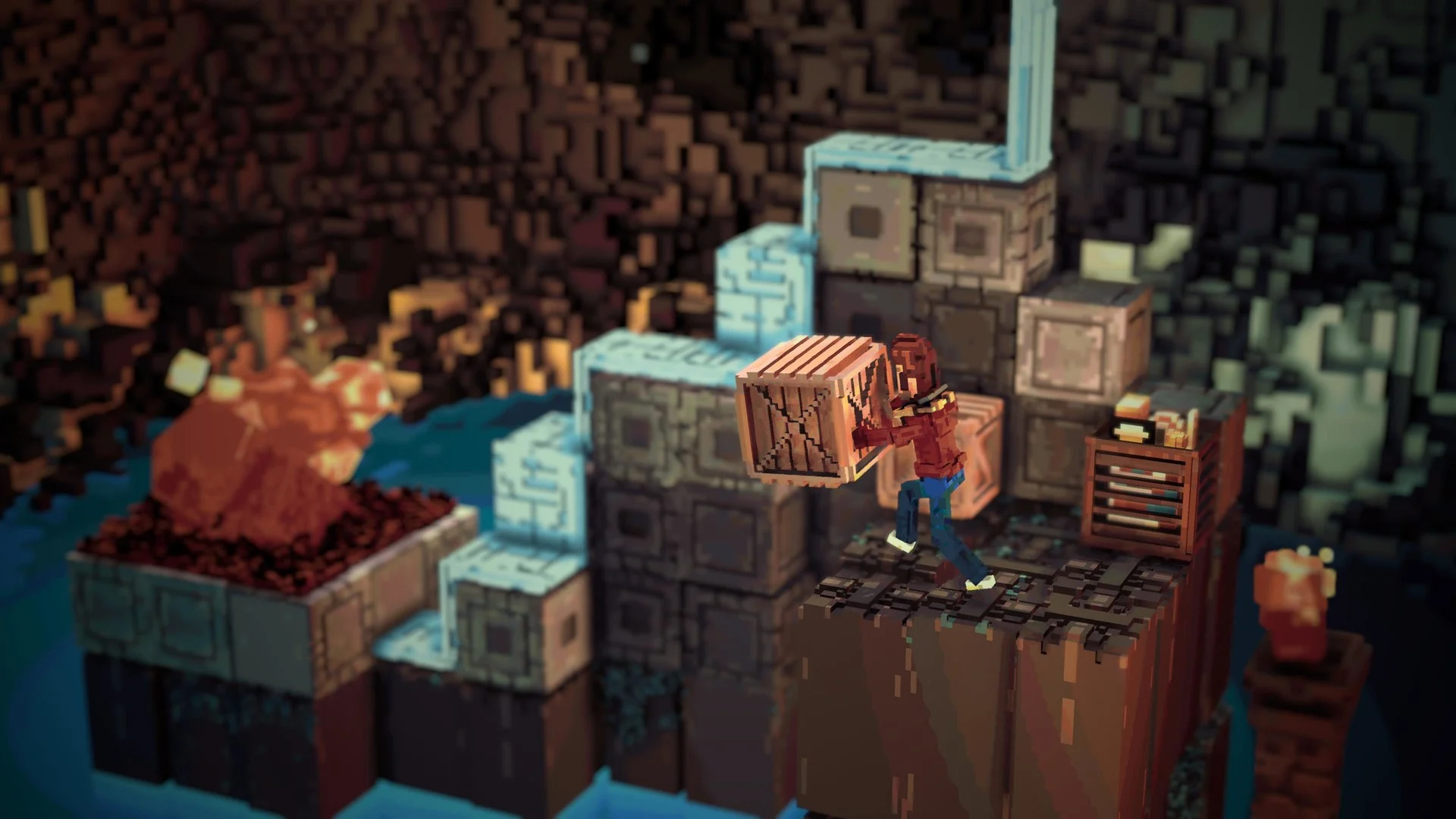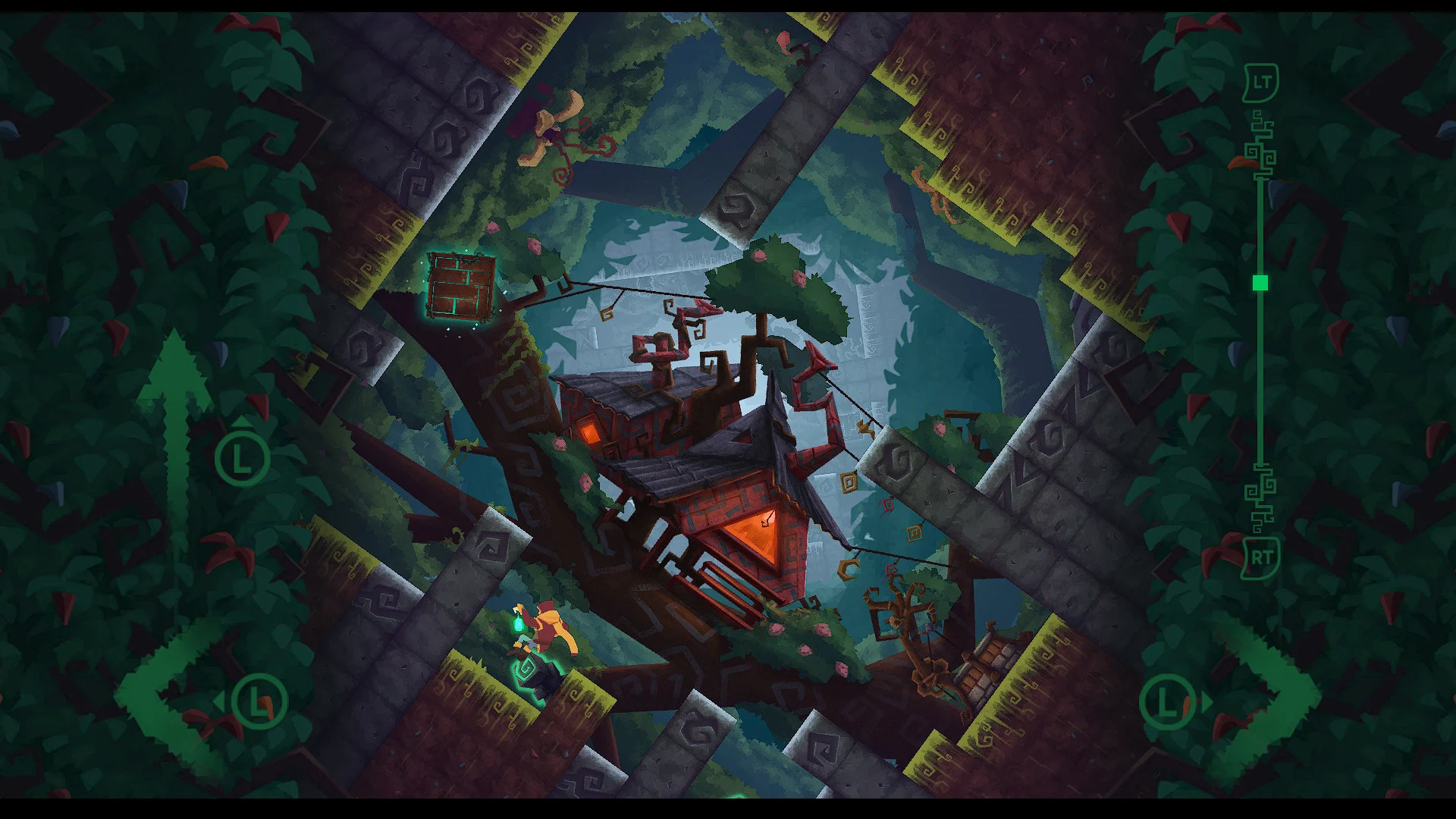One of my favorite video game franchises of all time was the Portal series. The series was revolutionary for puzzle games and became an inspiration for many of the games that have come to the genre in recent years. For this reason I am intrigued when I see a new indie game with a similar feel to it. This is one of the reasons I was intrigued when I saw the Faraday Protocol. A puzzle game that gives you a gun that manipulates the world around it. How could I not be at least a little intrigued? Faraday Protocol is a fun puzzle game for fans of the genre that can be a little rough around the edges.
In the Faraday Protocol you play as Raug Zeekon. Raug is an interstellar archeologist who was sent to investigate a mysterious signal being broadcast from a previously unexplored star system. As you arrive you are welcomed by an AI voice telling you that you have arrived on Opis and proceeds to guide you to towards completing a set of tests. The planet was once thriving with an advanced civilization but no intelligent life appears to still be on the planet. As you complete the planet’s tests can you figure out what happened to its original inhabitants?
Faraday Protocol is a puzzle game through and through. The game is divided up into a number of tests/puzzles with the objective of each being to open up a path to the next test. The game utilizes a number of mechanics that are introduced throughout the game. I would say that the game’s main mechanic though involves transferring energy between locations. You are equipped with a blaster which has the ability to absorb a source of energy and then fire it to a new location. There are two types of energy. Red/orange energy is moved into objects in order to power them up, and blue energy connects two nodes together in order to transfer energy from one location to another. Most of the puzzles include two energy holders that are connected to one another which allows you to transfer one type of energy into another type. You need to use both of these types of energy sources together in order to open doors to gain access to more energy sources which are needed to open the exit of the current puzzle.
While Faraday Protocol is quite different from the Portal series, it does share some similarities as well. Instead of using portals to move around the environment, you are mostly moving energy around in order to open up new paths. The puzzles have their own twists due to the game’s main mechanic, but the puzzle design is similar to a lot of games from this genre. Despite this I found the energy manipulation element of the game to be quite enjoyable. The mechanic is simple and yet it works quite well.
I think the main reason why the puzzle mechanics work is that the puzzle design is generally pretty good. I don’t know exactly how I would classify the puzzle difficulty. I wouldn’t consider the game to be particularly difficult, but the puzzles require thought were you likely won’t just stumble onto the solution. Generally speaking I would say that a majority of the game is moderately difficult. The game introduces a few other mechanics as you progress, but the puzzle element does a good job building upon prior concepts to keep things interesting while also making the puzzles more complex. Many of the puzzles follow the process of using the energy sources you have access to in order to obtain additional sources which are needed to open a path to the eventual exit. The puzzles do a good job forcing you to think outside of the box in order to figure out how to manipulate the different sources of energy. Generally if you like these type of puzzle games you should really enjoy this aspect of the game.
While I generally thought the game’s puzzle design was pretty good, it does have a few issues. First the game tends to reuse the same puzzle mechanics quite a bit. The game has a couple different main puzzle ideas which it then slightly tweaks to implement in puzzle after puzzle. Usually the twists are enough to keep each of them fresh, but every so often it does feel like you are doing the same puzzle over again.
The second issue with the puzzles is that the game usually doesn’t give you much direction in how to solve them. In some ways this is a good thing as how fun would a puzzle game be if it just told you what to do. The problem with Faraday Protocol is that it basically forces you to figure out most of the mechanics on your own. Most of the mechanics are easy enough to figure out. For those that aren’t apparent right away though, you basically need to do some trial and error just to figure out how the puzzle even works. Usually this isn’t a huge problem, but some of the hardest parts of some of the puzzles is just figuring out how the puzzle itself works before you can even start to figure out how to solve it. I like that the game doesn’t over-explain things, but it could have maybe done more to explain some of the mechanics when new ones are added to the game.
While the Faraday Protocol is mostly a puzzle game, it does feature some platforming as well. These mechanics are pretty basic as you mostly just have a single jump that you use to reach a higher position. In a way this element of the game appears to be emulating games like the Portal series. Unfortunately the mechanic is kind of lacking. There is nothing special about the platforming as you just jump from platform to platform. This usually works fine, but the mechanics do get in the way at times. Simply put you won’t confuse the game for a platformer as the mechanics themselves sometimes lead you to missing jumps which force you to redo sections of the current puzzle to get back to your previous position. If you were looking for a puzzle platformer you will probably be disappointed by the Faraday Protocol as the game probably would have been better off sticking to just being a puzzle game.
Usually the puzzle game genre is not well known for its theming and storytelling as most fans are just looking for fun and challenging puzzles to solve. While I wouldn’t say that the theming or story of Faraday Protocol is great, for the puzzle genre it is pretty good. The game’s overall theme feels like a mixture of a sci-fi space theme mixed with an Ancient Egypt look. Most of the game takes place in the various puzzle rooms so the locales do tend to look a lot alike. I thought the game’s visuals were still pretty good. The story is solid as it mostly revolves around trying to figure out what happened to an old civilization that seemed far ahead of its time. I wouldn’t say that the story or theme by itself is enough to warrant a purchase, but they are quite a bit better than you would normally expect from this type of puzzle game.
Being a puzzle game the length of Faraday Protocol is going to be quite dependent on how fast you solve the puzzles. If you use a walkthrough or solve the puzzles really quickly, the game is going to take considerably less time than someone who struggles with solving the puzzles. To complete each of the puzzles knowing the solution will probably take a couple minutes at max. Obviously how long it takes you to figure out the solution will ultimately determine how long each puzzle will take. Because of these factors I can only give a rough estimate of the game’s length as it is bound to vary quite a bit. I would say that the average player will probably need five to seven hours to beat the game with some players maybe needing a little less or more. As the game is a puzzle game it doesn’t really have any replay value outside of doing the same puzzle again. The game does have some hidden collectibles that you can find though by finding hidden switches. This will add some time to the game if you care about getting all of the game’s achievements.
For the most part Faraday Protocol is pretty much what I expected it to be. While it has some platforming elements (which aren’t anything special), the game is to its very core a puzzle game. Most of the game revolves around figuring out how to redistribute energy sources in order to open up paths to progress further and obtain more sources of energy. The puzzle mechanics are pretty simple and yet they work pretty well for the most part. The puzzle design is generally pretty good as it forces you to think of different ways of approaching situations. The game does a good job giving you a sense of accomplishment when you solve most of the puzzles. A few of the puzzles do get repetitive after a while as the game sometimes reuses concepts. The game doesn’t always do a great job giving you a good idea of how new concepts work either. Otherwise the game’s story and theme are pretty good for this type of puzzle game.
Basically my recommendation for Faraday Protocol depends on your opinion of puzzle games and the concept of moving around energy sources in order to open up the path forward. If you aren’t a big fan of the genre or the game’s concept doesn’t really interest you, I don’t see the game being for you. If you a big fan of puzzle games though and like the idea behind the game, I think you will enjoy Faraday Protocol and should consider checking it out.
Buy Faraday Protocol online: Nintendo Switch, PlayStation 4/5, Steam, Xbox One/Series X|S
We at Geeky Hobbies would like to thank Red Koi Box and Deck13 for the review copy of Faraday Protocol used for this review. Other than receiving a free copy of the game to review, we at Geeky Hobbies received no other compensation for this review. Receiving the review copy for free had no impact on the content of this review or the final score.

